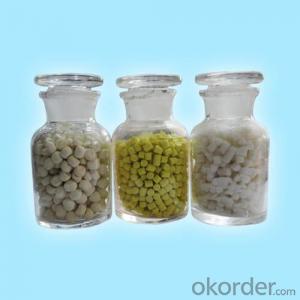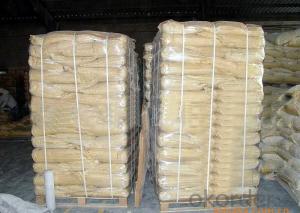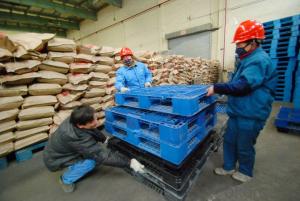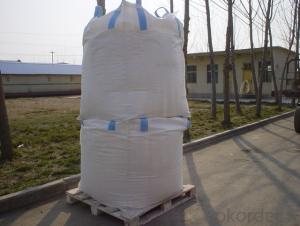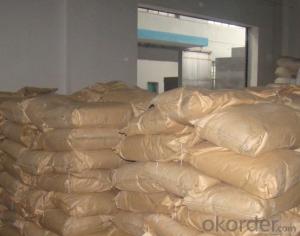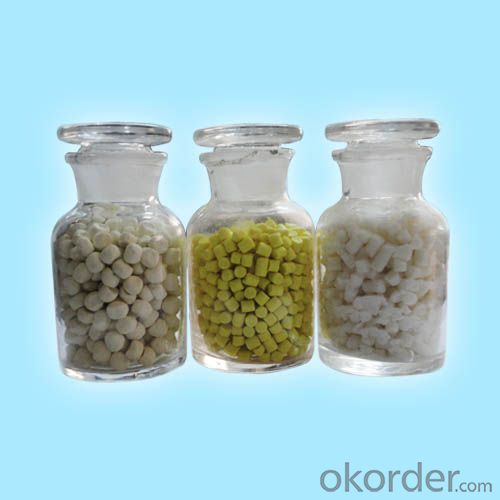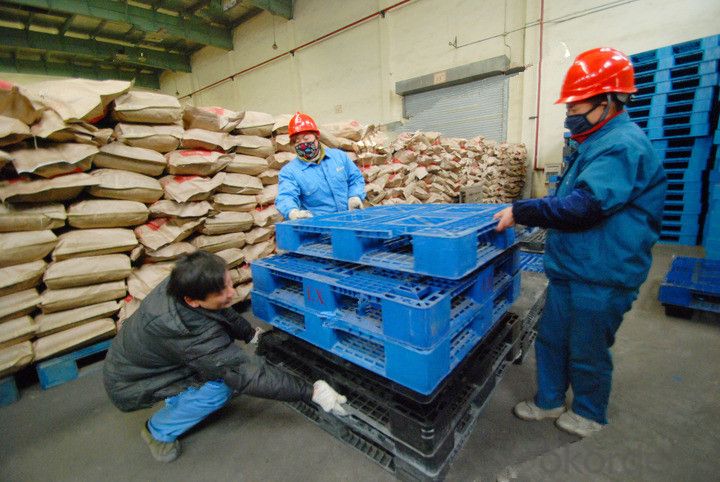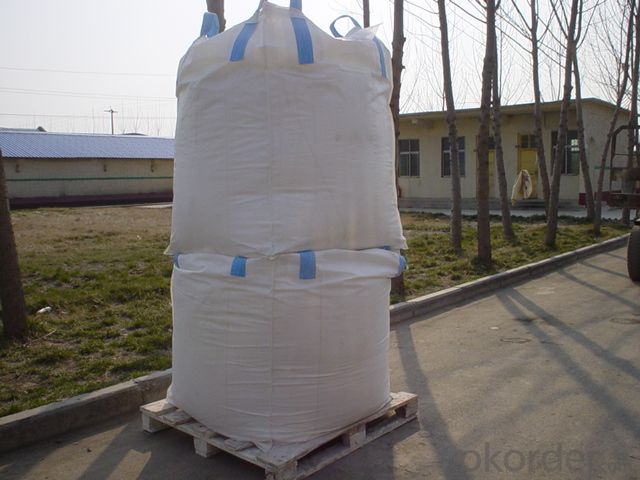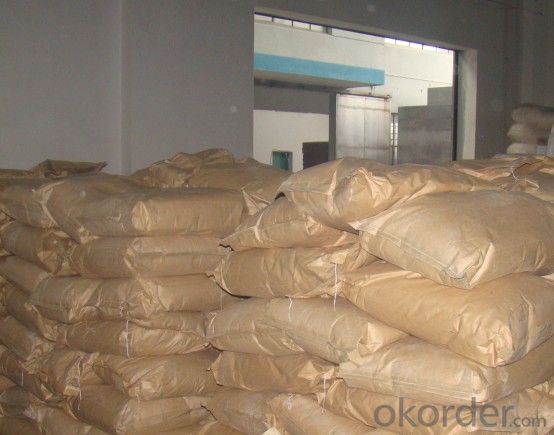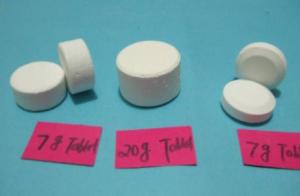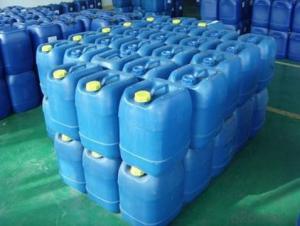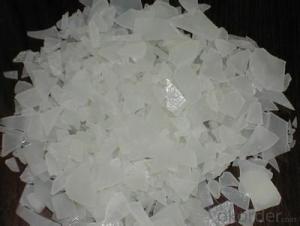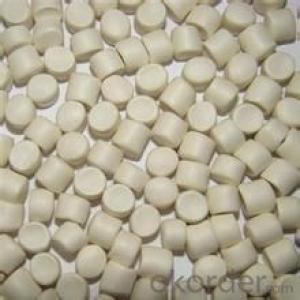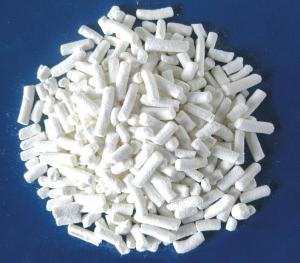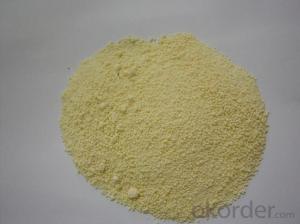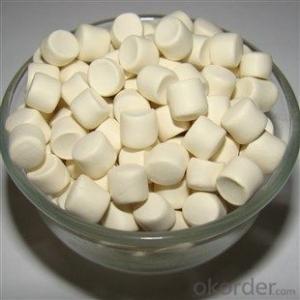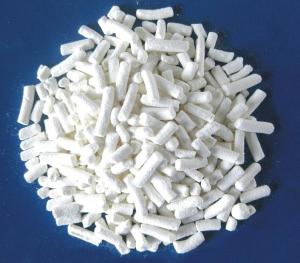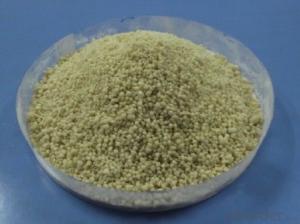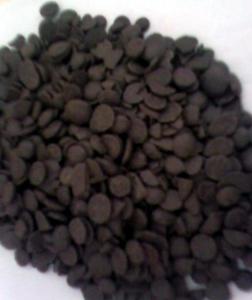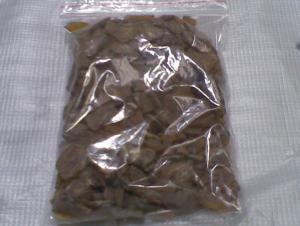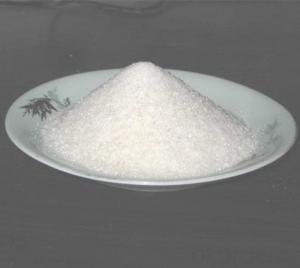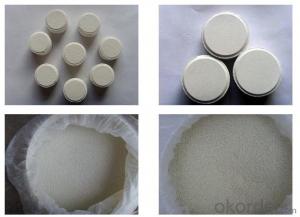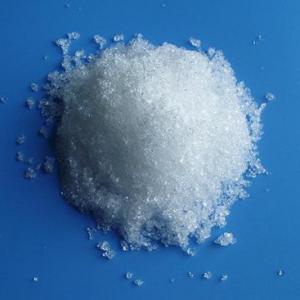RUBBER VULCANIZING ACCELERATOR TMTD (TT)
- Loading Port:
- Tianjin
- Payment Terms:
- TT OR LC
- Min Order Qty:
- 25 m.t.
- Supply Capability:
- 12000 m.t./month
OKorder Service Pledge
OKorder Financial Service
You Might Also Like
RUBBER VULCANIZING ACCELERATOR TMTD(TT)
Chemical Name : Tetramethyl thiuram disulfide
Molecular Formula: C6H12N2S4
Molecular Weight: 240.43
CAS NO. : 137-26-8
Executive standard:HG/T 2334-2007
Specification:
| Index | |
First-class products | Acceptable end-product | |
Appearance |
| |
Initial M.P, oC ≥ | 142.0 | 140.0 |
Loss on drying, % ≤ | 0.30 | 0.30 |
Ash, % ≤ | 0.30 | 0.30 |
Residues on 150μm sieve, % ≤ | 0.00 | 0.10 |
Properties: White, light gray powder or granular. The density is 1.29. Soluble in benzene, acetone, chloroform, CS2 partly soluble in alcohol, diethyl ether, CCI4 insoluble in water, gasoline and alkali with lower concentration. Meeting hot water becomes to dimethylamine ammonium and CS2. Be sensitive to skin and pneogaster
Application: Can be used as a single accelerator, as a secondary accelerator or as a sulphur donor in most sulphur-cured elastomers. Scorchy and gives fast cure rates. Produces an excellent vulcanisation plateau with good heat aging and compression set resistance in sulphurless and EV cure systems Good color retention is obtained in non-black vulcanisation. A valuable secondary accelerator for EPDM. May be used as a retarder in the vulcanisation of polychloroprene rubber with ETU and also be used as bactericide and pesticide
Packaging: 25kg plastic woven bag, paper with plastic film bag, kraft paper bag.
Storage: The product should be stored in the dry and cooling place with good ventilation, avoiding exposure of the packaged product to direct sunlight. The validity is 2 years.
Note: The product could be ultrafine powder based on customer accurate requirement.
- Q: Why is the catalyst in the chemical balance, the rate of change and balance?
- But the positive reaction rate is accelerated, but also speed up the reverse reaction rate, the two increase the same multiple, so the system is still in a stable state, the same balance.
- Q: I dont know what it is but when i open up my computer it comes up and it says that its not working? so i really dont know what to do.
- Catalyst is what ATI calls the drivers for their video cards or video devices built into mainboards. Download the newest video driver for your video card from ATI or from your computer manufacturer's site if the video device came with the computer. Install that, and you should be all set. You may want to check your add and remove programs and remove any of the old, malfunctioning ATI or Catalyst drivers before attempting to install the new one. Good luck!
- Q: What are the requirements for the catalyst for the chemical industry?
- Generally find a few, according to the cost and cost of cost, choose cost-effective
- Q: I opened catalyst control center to see what its was, i didn't change anything and now when i full screen a youtube and hulu the screen will be black and the loading bar at the bottom will be stuck. I also noticed that now when i play minecraft all the blocks have a black out line i cant get rid of. I tried deleting my .minecraft and that didn't fix it.
- on the backside suitable hand corner of the small reveal, there's a field with a smaller field in it (suitable of the quantity), press that, it provides you with the finished reveal. you could press the comparable button once you opt for to bypass decrease back. The button would have a crimson X in it this time.
- Q: Could God be Discribed as a Catalyst?
- it is my understanding that a Catalyst will bring something together that is already created. God on the other hand, according to Judeo-Christian Theology, he didn't just bring it together, he created it. plus, if the Judeo-Christian God did exist, we would have to assume (because of archaeological and scientific evidence) that He is the God of the Bible and that he does play a role in the same of things.
- Q: What is chemical adsorption and its relationship with heterogeneous catalysis
- The catalytic cycle includes five steps: diffusion, chemical adsorption, surface reaction, desorption and reverse diffusion.The chemical adsorption is an important part of the heterogeneous catalysis process, and the adsorption of the reactants on the catalyst surface,
- Q: Why are catalysts so effective in small amounts?
- By definition, catalysts serve to accelerate certain chemical reactions, by lowering the activation energy required for them to proceed. They are not consumed by the reaction, which is why they are effective in small amounts.
- Q: Can chemical reaction limits be changed by catalyst or other methods?
- Do not know what you say is the limit of the concept of reaction. The general catalyst can change the rate of the reaction, most of which is used to speed up the reaction rate, that is, it will be difficult to react or normally does not respond to the material to provide a reaction of the bridge, so that the material through the catalyst to establish a connection to achieve the reaction the goal of.
- Q: how do catalysts help in green chemistry?
- Catalysts allow more efficient conversion of products in irreversible reactions, or they allow for the faster attainment of equilibrium in equilibrium reactions, thereby reducing time, raw material waste and emissions. Also, because catalysts are reusable, they can be recycled.
- Q: Does all chemical reactions have a catalyst?
- Not some reaction without catalyst
Send your message to us
RUBBER VULCANIZING ACCELERATOR TMTD (TT)
- Loading Port:
- Tianjin
- Payment Terms:
- TT OR LC
- Min Order Qty:
- 25 m.t.
- Supply Capability:
- 12000 m.t./month
OKorder Service Pledge
OKorder Financial Service
Similar products
Hot products
Hot Searches
